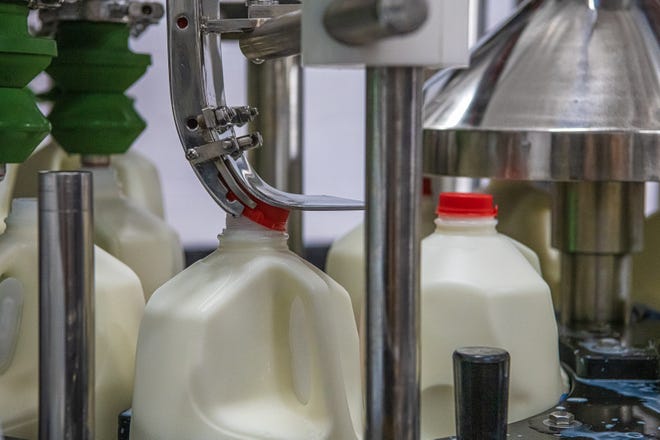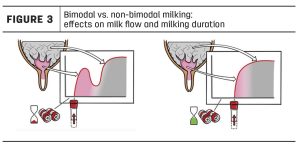
The claim: Indent on milk jug pops out when milk is old
A July 24 Facebook post shared by over 60,000 users says yes: Just look at the circular indent found on the sides of some plastic milk jugs.
“How old were you … when you found out … the circle on the milk pops out when it’s old?” says the meme, which shows an indented milk jug. USA TODAY reached out to user who posted the meme for comment.
“About 15 seconds ago and my Dad was a Milkman!” says one of the more than 500,000 comments.
The pop-science explanation for this theory is that gas produced by the bacteria in milk will eventually build up, forcing the indent to pop out.
A spoilage-indicating container would be convenient, but dairy experts say it’s extremely unlikely that the indent would protrude because of milk’s age. Rather, the indent helps jug manufacturers control volume and stabilize the jug.
Bottle makers use indents to control volume, strengthen jug
According to Matt Herrick, senior vice president of communications at the International Dairy Foods Association, the indents come from plastic mold inserts that allow producers precise control over the volume and weight of milk containers during manufacturing.
Unlike glass, the high-density polyethylene plastic jugs are made of shrinks slightly over time. It also shrinks more in hot temperatures than cold temperatures, a report by Australian polyethylene and polymer manufacturer Qenos said.
Producers must make jugs slightly larger to offset inevitable shrinkage if they are exposed to summer heat in transport and/or go to long-term storage before being filled, but they want to keep the jugs smaller in cold months and if jugs go directly to be filled.
Interchangeable volume inserts – which are the indentations you see – allow them to do that without changing the base molds.
This is important because if jugs shrink too much, milk could overflow, but if jugs are too large, they will appear underfilled, even though the amount of milk is the same. Customers won’t buy those bottles, suppliers say.
“People who buy milk jugs, they want them to be full,” said Mike McCarty, vice president and sales manager of plastic bottle manufacturer Indiana Bottle Co., in a phone interview with USA TODAY.
The indentations also add structural integrity to the jugs. According to McCarty, this can allow manufacturers to make cheaper, lightweight plastic stiffer and improve cost-efficiency.

Milk jug indent doesn’t consistently indicate spoilage or age
It’s not hard to guess why alternative theories about the circular indent have sprung up – a Google search of “circular indent on milk jug” returns scant information. But one result is a Distractify article that formulates the spoiled-milk theory of the indent’s function.
Bacteria present in milk produce gas, the article says, and over time, as the gas buildup grows large enough, the jug must expand to accommodate it. That is what causes the indentation to pop out.
However, the theory’s assumption that gas would build up over time is flawed because bacteria can spoil milk without producing gas at all.
According to Bob Roberts, professor and head of food science at Pennsylvania State University, there are two types of bacteria in milk: those that survive the pasteurization process and those that are introduced afterward. While it’s possible that gas producers are among those bacteria, it’s not always the case, he said.
When milk is refrigerated, it generally spoils because bacteria that survived the pasteurization process break down fats and proteins, creating the sour smell that tells you your milk has gone bad. The bacteria responsible for this generally don’t produce gas, so the circle would remain indented even though the milk is old.
On the other hand, gas-producing bacteria grow much more slowly in cold temperatures than non-gas-producers do. That’s why Roberts believes a warm environment is the most likely culprit of an inverted indent.
“It (the jug expanding because of bacterial activity) could happen, but most likely if the milk is temperature-abused, I mean really temperature-abused,” Roberts told USA TODAY in a phone interview. “At refrigeration temperatures, you’re not going to know your milk is old because the indent pops out.”
According to Tim Stubbs, vice president of product research and food safety at Dairy Management Inc., the kind of gas buildup required to force out an indent could also occur if milk was cross-contaminated after opening and/or well past its expiration date.

























